That's all folks

That’s all Folks
It’s late August and the end of my least successful beekeeping year ever. That sounds very negative, so perhaps it should be qualified. It’s the end of my least successful beekeeping year in terms of honey production.
However, in terms of the satisfaction I’ve got from my beekeeping, it’s been a pretty good year. Let’s examine these two things separately, dealing with the bad news first.
Tell ’em about the honey, mummy†
My production colonies only generated about 25lb each of Spring honey. Some of this was clearly oil seed rape (OSR) as there were fields just about in range, but much of it was essentially mixed hedgerow and tree nectar, and none the worse for that. This was all extracted in late May or early June and is now stored, set, in buckets. Later in the year, once the temperature drops, I’ll prepare soft set honey for sale or distribution to friends and family.
25lb is firmly at the bottom end of the averages over the last few years though – in fairness – It’s only my second Fife Spring, so I don’t have much recently to compare it with. Colonies were doing well when I first inspected them, but in some cases that wasn’t until early May. The active beekeeping season is only 4-5 months long here (latitude 56.3° N).
June started well, with clear weather and high temperatures.
And then it started to rain. And continued for almost the entire month.
None of my full-size colonies needed feeding, but most reduced their brood rearing. July nectar flows were poor. The lime yielded a small amount of very high quality honey, but for whatever reason – poor weather, colonies not strong enough, patchy flows – pretty-much nothing else. The summer honey was extracted in mid-August and is already disappearing fast.
I didn’t take any colonies to the heather as I was abroad for a chunk of July when I’d need to be preparing and shifting them to the moors. And, in all likelihood, they probably weren’t strong enough anyway.
And that was it … like last year, all over much sooner than expected.
There’s some balsam in central Fife along the River Eden that might give some late-season nectar and there’s ivy (but that is some way off flowering yet) but I usually let the bees keep anything they collect once the summer honey is extracted.
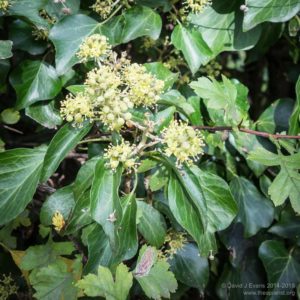
Flowering ivy
And the good news is
Beekeeping isn’t all about honey. There’s also tremendous satisfaction to be gained from working with the colonies, improving your stock and feeling that – although perhaps not in complete control – you’ve got a pretty good grasp of what’s happening and how things are going.
In this regard, 2017 was a success.
I know I lost one swarm (actually a cast from the queenless half of a split). I got a call to say that the apiary was thick with bees but they’d long gone by the time I extricated myself from meetings and got home. In itself this wasn’t a success. However, I learned my lesson and managed to hive a second cast that issued from the same colony a day or two later. I also had success with my bait hives.
With a couple of exceptions my vertical splits went well, with the resultant queens both laying well and heading well-behaved colonies. The couple that didn’t work developed into (drone) laying workers and were dealt with successfully by uniting.
In retrospect, considering the weather in early/mid-June I’m astounded any queens managed to get out and mate. By late July colonies headed by these newly mated queens were developing well, with frame after frame of brood exhibiting a pretty respectable laying pattern.
Throughout the season I had a pretty good idea what was happening in most of my colonies. There were no big surprises … “Oops, a virgin queen, where did she come from?”, or “Grrrr … no queen, no eggs and no swarm cells, I’m stumped”.
Colonies behaved in a thoroughly predictable manner. Strong ones were caught before they swarmed, split and were merged back to a double brood box. Nucs developed pretty well, though they needed close attention and some emergency feeding through June. No drama, no panic.
The end of the summer season, other than the truly woeful honey yield, has left me with a good number of nicely behaved and generally very strong colonies. As always there’s one exception, but I’ll unite that weakling late this week if things haven’t picked up.
All the gear, no some idea
Gradually equipment standardisation is starting to pay dividends. I ran out of almost nothing (I certainly didn’t run out of supers 🙁 ) and managed to mix’n’match as needed to leave colonies secure, watertight and with the proper bee space when needed. Homemade split boards ended up being pressed into service as floors and it’s clear I’ll have to make some additional kewl floors this winter.
Bamboo-strengthened foundationless frames were a great success. Furthermore, I prepared a second batch mid-season and never got round to using them, so have plenty to start the season next year. Result! However, it’s sobering to realise that one of the reasons they weren’t used was that the nectar flow simply wasn’t strong enough to get them drawn properly.
Finally, whilst we’re on the subject of equipment, I’ve used about half a dozen Abelo poly hives this year in addition to the usual Swienty boxes with homemade floors and roofs. First impressions of the Abelo boxes are pretty positive and I’ll write something up later in the year on them.
Season’s end … or the start of the new season?
Late summer and autumn is an important time in the beekeeping year. Some even consider it the start of the next season, as success in the subsequent year is very dependent upon the preparation in the preceding autumn.
All my colonies are scarfing‡ down large quantities of fondant at the moment. They’ll all get another few kilograms as the autumn progresses. Unless there’s good reason to, it’s unlikely any colonies will be inspected again until Spring.
Varroa treatment is ongoing and the mite drop from most colonies is reassuringly low. I count the mites from each colony over a two week period. Over the first 5 days, some dropped just single figures …
All colonies are coordinately treated to maximise decimation of the mite population at a time when bees have a tendency to drift more and/or rob adjacent colonies – both being well-documented routes by which Varroa can be transmitted between hives. I’ve also helped a neighbouring beekeeper (with colonies within range of my own apiary) by loaning out my Sublimox so that, together, the mite population at a landscape-scale is reduced.
This is simple common sense. I don’t want my (nearly) mite-free colonies infested from neighbouring apiaries and I also don’t want the colonies I do have with appreciable mite levels (~50+ after 5 days treatment) to infest others.
2018
It’s far too soon for much serious thought about 2018. However, I already know there are going to be some major changes to my beekeeping. The local Council have just announced that they will shortly (Spring next year) build a new road literally through the middle of my bee shed and apiary … finding a new location and getting things rebuilt is my major focus at the moment.
And finally … it’s harvest time and raining again …
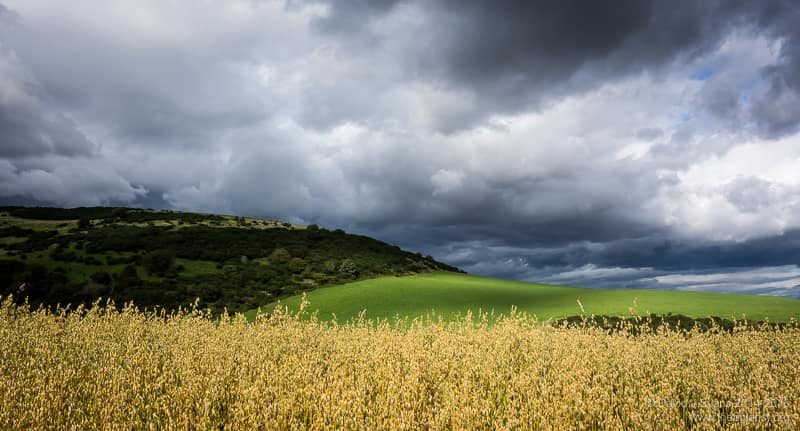
Mainly dry …
† Tell ’em about the honey, mummy was a catchphrase from a TV advert for Sugar Puffs breakfast cereal. The advert aired from 1976 to ’85 and featured the Honey Monster and Henry McGee (from the Benny Hill show).
Henry is the one on the right.
They don’t make advertising like that any longer. For obvious reasons.
‡ Scarf is American slang meaning to ‘eat voraciously’. It’s probably a bastardisation of the word scoff. Scarf has other meanings and I strongly suggest you don’t look these up.
Colophon

That’s All Folks
The phrase That’s all folks dates back to 1930 when it was used on the closing screen of a Warner Bros. Looney Tune cartoon.
Over the years many different characters used this line on both Looney Tunes and Merrie Melodies cartoons. Mel Blanc (1908-’89), the actor who voiced (stuttered) the most famous version … Th-th-th-that’s all folks! has the engraving That’s All Folks on his gravestone.
There’s a 1949 Merrie Melodies cartoon called The Bee-Deviled Bruin with the Three Bears, a colony of bees and a shortage of honey for breakfast. Typical slapstick ensues. It ends with “That’s all folks”.
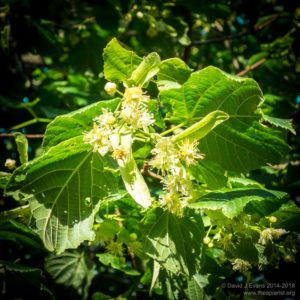
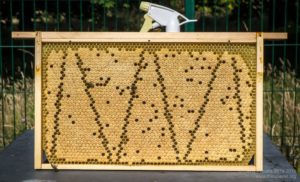
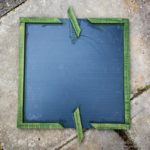
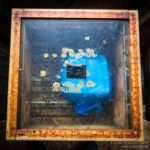
Join the discussion ...